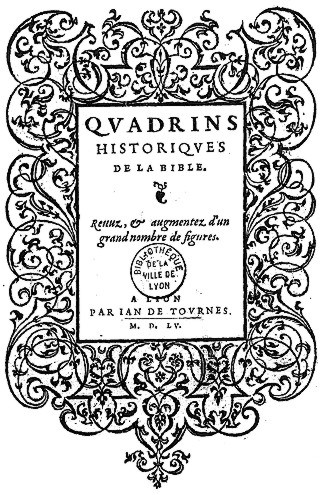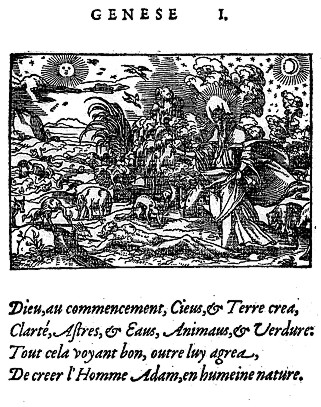Lessico
Claude Paradin
Claude
Paradin, latinizzato in Claudius Paradinus. Scultoree notizie
biografiche relative a questo scrittore di libri di emblemi attivo in Francia
e nell’Europa continentale. Canonico di Beaujeu (dipartimento del Rodano nella regione del Rodano-Alpi), nato forse nel 1510
a Cuiseaux (Saône-et-Loire) e morto
nel 1573. Di lui si conoscono un The true and lyvely historyke purtreatures of the
woll bible (Lyons, 1553) e un’altra opera, Symbola heroica, scritta in
collaborazione con l’italiano Gabriele Simeoni: Paradin, Claude (1510?-1573) / Simeoni, Gabriele
(1509-1575). Les
Devises heroiques, de M. Claude Paradin, chanoine de Beaujeu, du Seigneur
Gabriel Symeon, & autres aucteurs. Antwerpen: Christopher Plantin, 1567. Aldrovandi
a pagina 270![]() di Ornithologiae
tomus alter (1600) cita l'emblema in cui è presente il gallo che tiene
una tromba sotto le zampe intitolato pacis
et armorum vigiles. Eccolo nell'edizione del 1621/22.
di Ornithologiae
tomus alter (1600) cita l'emblema in cui è presente il gallo che tiene
una tromba sotto le zampe intitolato pacis
et armorum vigiles. Eccolo nell'edizione del 1621/22.
Pacis et armorum vigiles
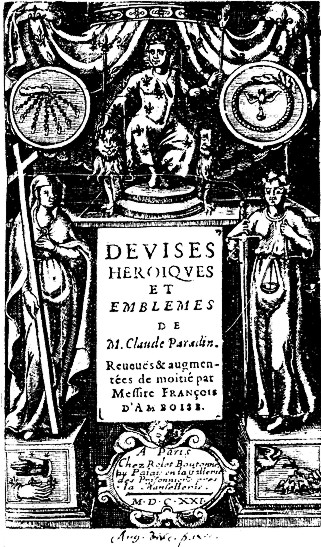
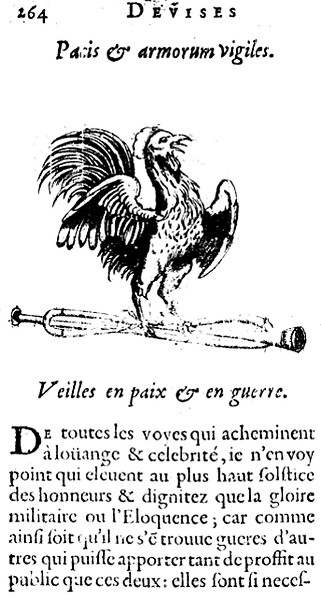
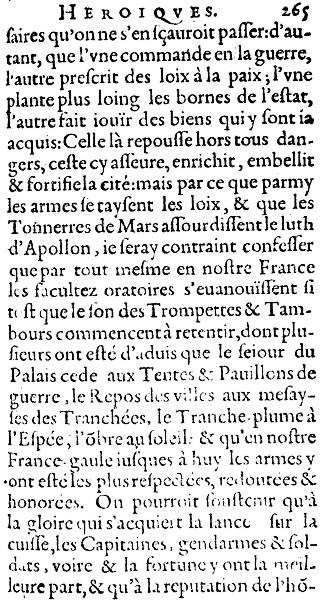
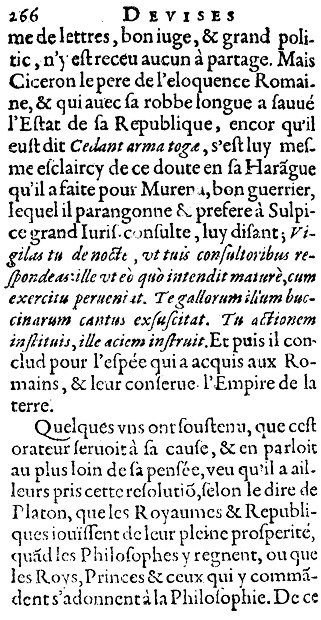
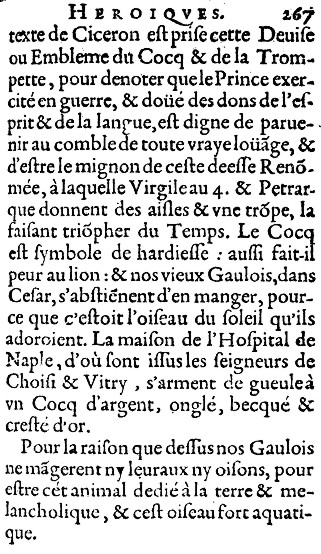
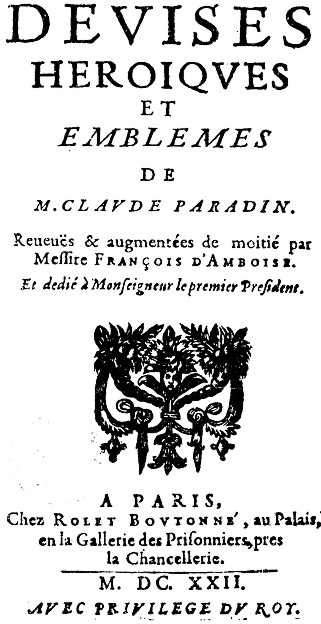
Claude Paradin (not to be confused with his older brother, Guillaume Paradin, who was actually a more prolific writer than Claude) was born in Cuiseaux (Saône-et-Loire), and – like his brother – he spent his adult life as canon of the église collégiale in Beaujeu, near Lyons. His literary output was very small, comprising in addition to the Devises heroïques only two other works, both also printed in Lyons by Jean de Tournes (a distinguished publisher specialising in illustrated and emblematic works), the Quadrins historiques de la Bible (1553) and the Alliances généalogiques des rois et princes de Gaule (1561).
Although quite different in theme, both of these illustrated works have some points in common with the Devises heroïques, though neither of them enjoyed anything like the popularity of his first work. The Alliances généalogiques deals with the cognate field of heraldry, providing illustrations of the shields of the kings and queens of France, accompanied by a brief summary of their genealogy, while the Quadrins historiques is an emblematically arranged version of the first part of the Old Testament, with each episode represented in a woodcut and narrated in a short French verse, very similar to other emblematically arranged versions of the Old and New Testament which were being published in Lyons and in Paris at this same period.
www.emblems.arts.gla.ac.uk
